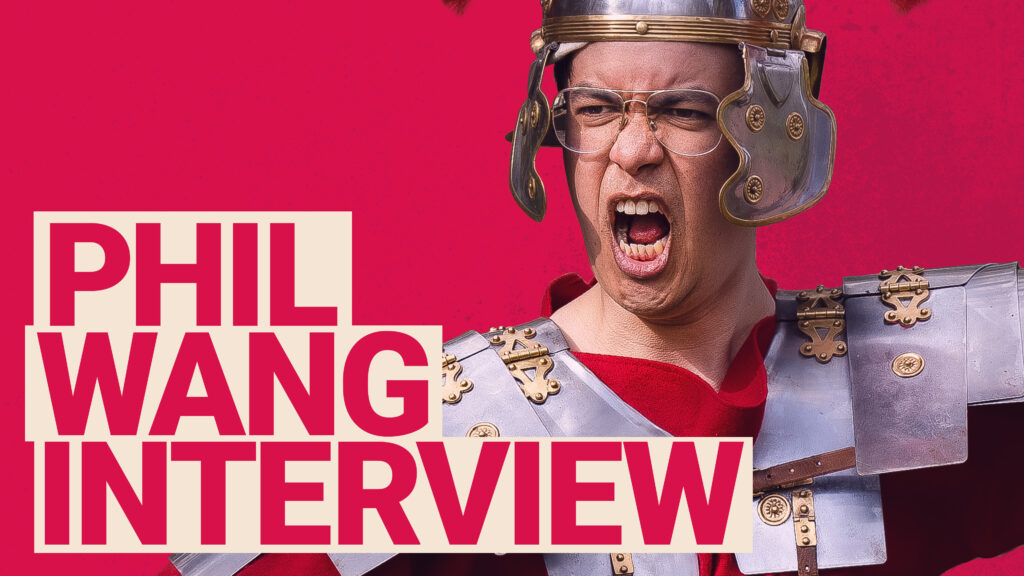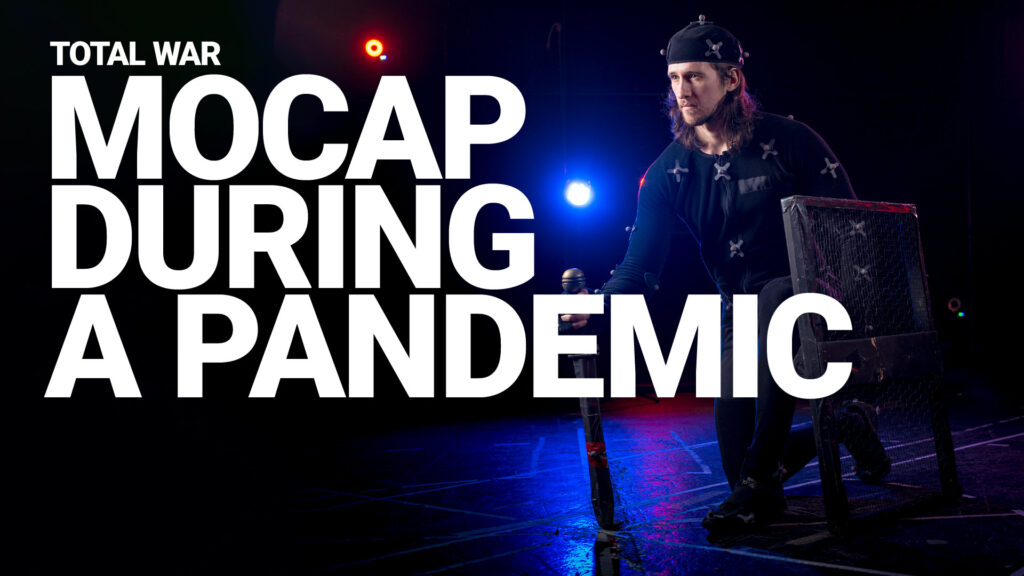“A coexistence of strength and concentrated lightness”: an interview with Total War Saga: FALL OF THE SAMURAI calligrapher Rie Takeda
This week, we announced that Total War: SHOGUN 2 – Fall of the Samurai would be joining the Total War Saga family (which you can read all about in our official announcement here).
As part of this, we commissioned a shiny new logo from Rie Takeda, an incredibly talented Japanese calligrapher and artist. We decided to take this opportunity to sit down and chat with Rie about her career, her craft, and what it was like working on her first project with a video game company – check it out below.
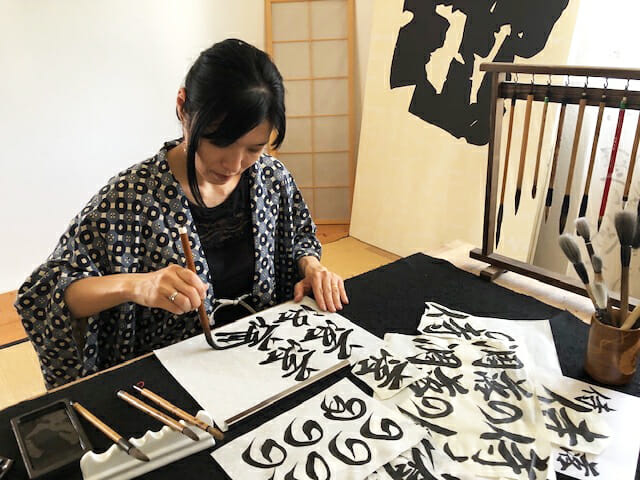
CA: Hi, Rie! First of all, could you please introduce yourself?
Rie Takeda: I’m a calligrapher and artist born in Japan – I trained in calligraphy and sumie ink painting there. I studied and worked in London and am now based in the Southern part of Germany, exhibiting and doing projects in Europe. I also teach shodo – the art of traditional calligraphy.
CA: You first started practising calligraphy at the age of five under the supervision of your grandmother, a highly skilled calligrapher herself. Can you tell us a bit about what this – and first starting out with calligraphy – was like?
Rie Takeda: As I was still small and had not yet managed to write the characters properly, my grandma taught me shodo calligraphy in her own creative way.
She showed me the development of kanji characters and that there are types that have retained their pictographic forms and look very much like the objects they represent – like moon, sun, tree, river, etc. So I was first ink painting many moons and birds with the calligraphy brush and then slowly moved on to the form and line of the kanji characters (and the techniques required to write them).
This was a fantastic way to get to know the characters and to keep focused and interested in practising. Her way of teaching influenced me in how I work on characters and also how I teach my students.
It was fun and I enjoyed the feel of the brush movement and the flow of the ink.

CA: What makes the Gayu calligraphy school unique?
Rie Takeda: It was founded by professional calligraphers and calligraphy teachers as they researched the development of calligraphy – so it is rather diverse and open to many styles and new inputs. One could learn many different calligraphy styles at the Gayu calligraphy school.
CA: What can you tell us about the sumie calligraphic design technique?
Rie Takeda: The art of sumie shares lots of the same brush techniques as calligraphy, from little points to fine jumping techniques – so one could create delicate bamboo, plum trees, mountain landscapes, and more. The technique of applying different toned inks is also an essential part. The lines express sensitive atmosphere.
In my works, I combine those sumie techniques and calligraphy techniques, so that the design becomes deeper and more expressive in a special way.
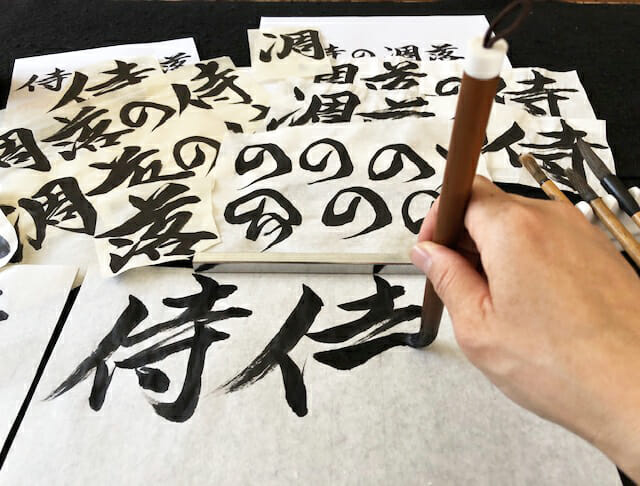
CA: How would you describe Neo-Japonism, the unique artistic style you personally founded and defined?
Rie Takeda: I could write a whole PhD on the subject!
Neo-Japonism has the essence of Japonisme and Taisho Romanticism as a nucleus in art terms. I developed it further with the visual input of momentum and contemporary flow. Rich layers of both technical and aesthetic understanding are interlaced.
It is technically a new way of merging traditional craftsmanship – like the art of calligraphy/sumie, symbolism, wabisabi, and haiku with Japonisme/Taisho Romanticism influenced art – developing a fresh unity of traditional and contemporary art forms.
CA: What led to Neo-Japonism’s creation?
Rie Takeda: I wanted to create a style that radiates with an embrace of unified harmony, striving to generate a natsukashii feeling – a warm nostalgia paired with the momentum of the here and now. A continuity of time and spiritual existence of this era was my inspiration.
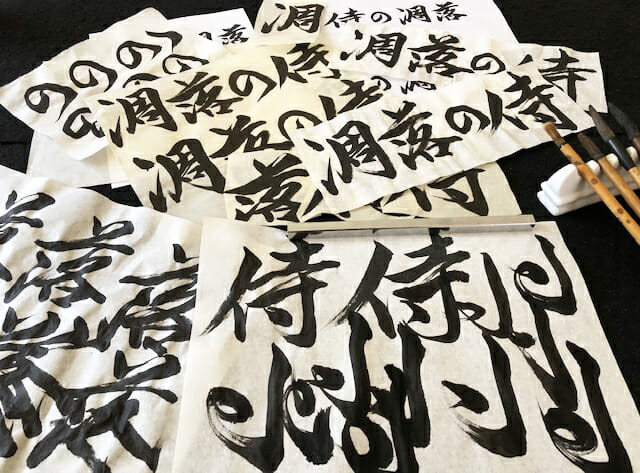
CA: How did your exposure to modern art influence you as an artist?
Rie Takeda: It often did influence me to reconnect with my own feelings and senses as well as rediscovering traditional Japanese skills – such as the design by tuning colour palette, lines, patterns, compositions, subject matter, and the expression of modern art.
It was in this way that I developed a deeper way of processing the creative input and focusing on a spiritual connection.
CA: In addition to calligraphy, you also create lots of other types of art: painting, collage, photography, graphic design, lighting, fashion, and body art. What led you to these art forms, and how do they manifest as part of your overall body of work?
Rie Takeda: Even they are a different medium, my inspiration is always to bring a new connection and harmonise the now and then, yin and yang, life and death, modern and wabisabi, handcraft and digital, active and stillness — depicting and conveying the sense of Japanese aesthetics

CA: What is your favourite artistic project you’ve undertaken so far?
Rie Takeda: I must say my body art project – it started as a piece of performance art in London back in 2001 and it is still ongoing.
For this, my poem or text is calligraphed onto human skin – a naked body. I find the process is very intimate and deeply personal. It can unveil and capture the message or code – what a person would like to keep secret or share and express. Body art is a beautiful way of experiencing another spiritual and magical side of calligraphy.
CA: And what was your most unusual artistic project?
Rie Takeda: The Wasabi Lounge – such an artistic and fun project!
I created a series of Nippon-themed art parties that included interactive photo slide art objects, themed film and music decoration, and themed performance.
There was loads of bubbling creative energy in one pot.
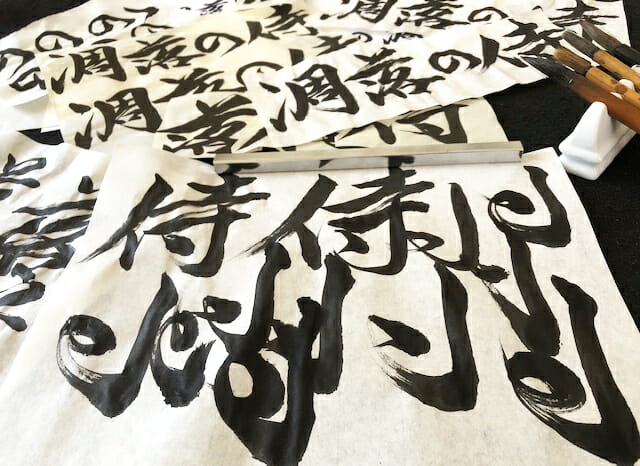
CA: Have you ever worked with video game companies before?
Rie Takeda: Not directly together like this.
CA: Do you play many video games yourself?
Rie Takeda: To be honest, I did not play them for a long time – sometimes I only act as an observer.
CA: What unique challenges did working on the FALL OF THE SAMURAI logo present?
Rie Takeda: As I decided to focus on the inner spirit of the samurai rather than the facade of the battle, capturing the complex value and deep conflict of two elements (like false/truth, traditional/modern, west/east, light/shadow, fire/water, sword/machine), visualising these, and transforming the essence into the flow and movement of a fighter – this was most challenging.
The inspiration felt like a coexistence of strength and concentrated lightness, dynamic and fine movement in calligraphy.

CA: What advice would you give those wanting to get into calligraphy?
Rie Takeda: What are you waiting for?!
See it more as meditation and inner development of oneself rather than achieving the technical aspects.
Please find a qualified teacher who can show and teach you one-to-one, hands on, and do not try to start to learn calligraphy by yourself or via YouTube – your precious time and beautiful energy would not be rewarded.
CA: Thank you for your time, Rie! Any parting words?
Rie Takeda: Have fun and be mindful.
You can learn more about Rie and her artwork over at her website.

